





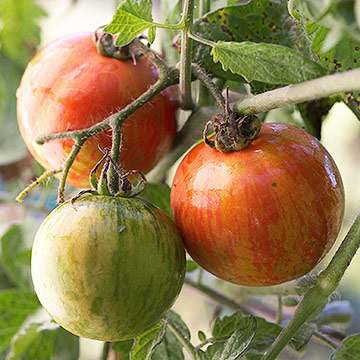
The most common garden problems fall into two categories: insects and diseases. If it's not one of these, the problem may be related to weather, soil condition, or other common situations. A weak or stressed plant is more susceptible to pests.
Recent breeding advancements have brought many disease-resistant tomato varieties to the market. When shopping for tomatoes, search out varieties that are proven resistant to anthracnose, wilts, and blight when possible. These plants are more likely to produce a great crop of fruit during challenging growing conditions.
When diseases and disorders strike, use this simple summary to diagnose your plant's problem and work toward a solution. With a little luck, you'll harvest armloads of fruit.
continue reading below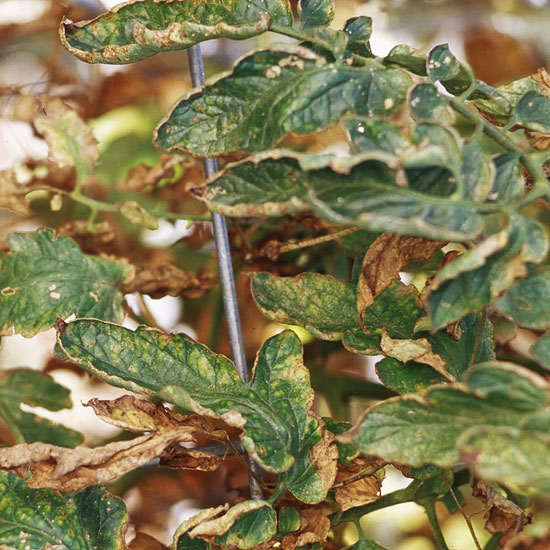
A fungal disease, anthracnose causes dead spots on the stem, leaf, and fruit of tomato plants. The dead spots are usually indented, yellow or brown, and have a circular outline.
Prevent the spread of anthracnose by mulching plants and removing and destroying infected plant parts. Avoid overhead watering; apply water to the base of the plant. Plant tomatoes in a different garden location each year to limit resurgence of the disease.
Brought on by temperature extremes blossom drop occurs when temperatures rise above 85 degrees F or drop below 58 degrees F. The temperature extremes cause tomato plants to discard their developing blossoms. Often the damage is not realized until harvest is reduced later in the season.
Prevent blossom drop by using row covers to raise night temperatures. Little can be done to thwart high daytime temperatures. Maintain healthy plants so they will set new buds after the heat wave passes.
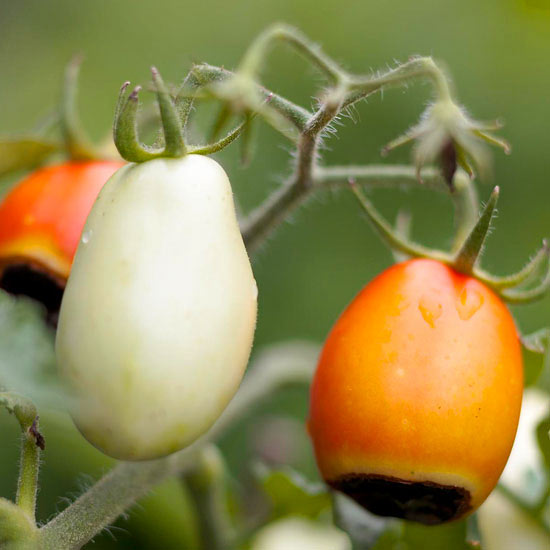
Caused by a lack of calcium, most often brought on by fluctuating water availability, blossom-end rot is a common tomato disorder. It appears as a sunken, dead area opposite the stem (the blossom-end of the fruit). The area will expand as the fruit matures.
Prevent blossom-end rot by promoting steady, stress-free plant growth. Water plants regularly to maintain moist, but not waterlogged, soil. Spread a 2-inch-thick layer of mulch around plants to conserve soil moisture.
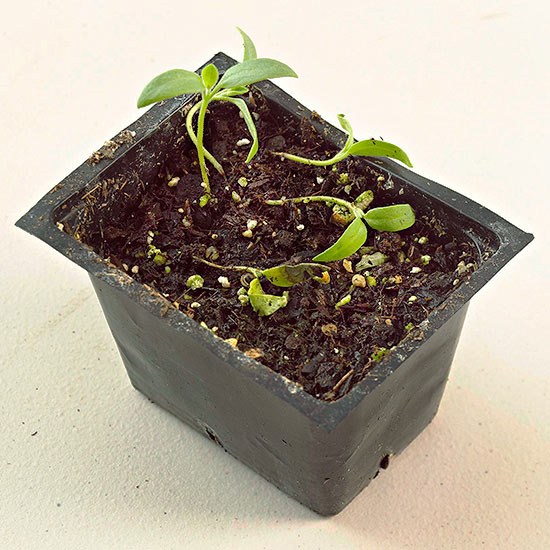
A frustrating fungal disease, damping off causes sudden collapse of seedlings, or failure to germinate. There are many steps you can take to prevent damping off. First, plant seeds when soil is at optimum temperature. Presoak seeds to speed germination. If planting seeds in potting mix, use sterile potting soil and containers. Allow the soil to dry between waterings.
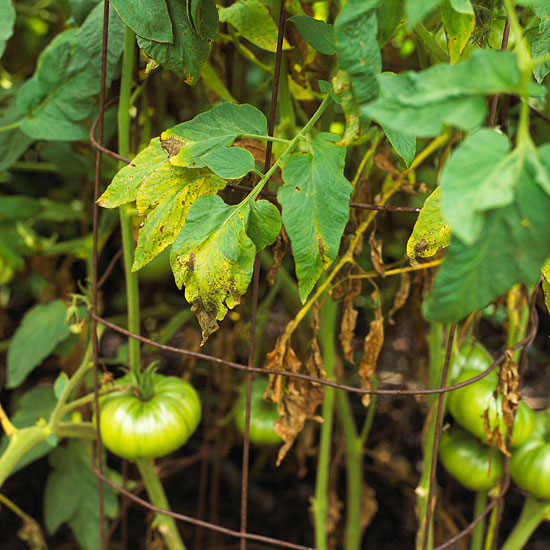
Premature loss of the lower leaves of a tomato plant is the most obvious symptom of early blight. This fungal disease produces brown or black spots on the lower leaves of plants. The spots have dark edges and frequently merge, forming irregular blotches. Dark, concentric rings surround the blotches. Early blight occasionally infects fruit at the stem ends, causing brown sunken areas. Warm, wet weather favors rapid spread of early blight.
Prevent early blight by planting resistant tomato varieties. Rotate tomato plants annual, avoiding planting them in the same area or an area that was previously home to peppers or potatoes. Also, harvest all ripe fruit at every picking to avoid infecting other fruit.
First appearing as water-soaked areas on the leaves, late blight fungus damage expands rapidly to form irregular, greenish black blotches on upper or lower leaves. The undersides of the leaves often show a downy white growth in moist weather. Infected fruit has large, irregularly shaped brown blotches and deteriorates into foul-smelling masses in short order. Late blight is most prolific during high humidity or heavy dew.
Prevent late blight by avoiding overhead watering and mulching plants. Also, plant tomatoes in a new garden area every year. Do not plant them in soil that previously hosted potatoes or peppers, which are also susceptible to late blight.
Mosaic virus is a frustrating viral disease. Symptoms include yellow or green mottled patterns on the infected leaves. Leaves may also be distorted, cupped, or curled.
Remove and destroy infected plants. When purchasing tomato plants, look for mosaic-resistant varieties.
Essentially a sunburn on a tomato, sunscald causes a section of the fruit to become soft, light in color, and dry. Prevent sunscald by maintaining enough foliage to shade fruits or shade fruits artificially with a shade cloth.
A destructive fungus, verticillium wilt causes sudden wilting. It is a very dramatic disease and symptoms will appear overnight. Older, lower leaves often die first. Prevent verticillium wilt by planting resistant varieties and rotating crops—plant tomatoes in a new garden location each year.
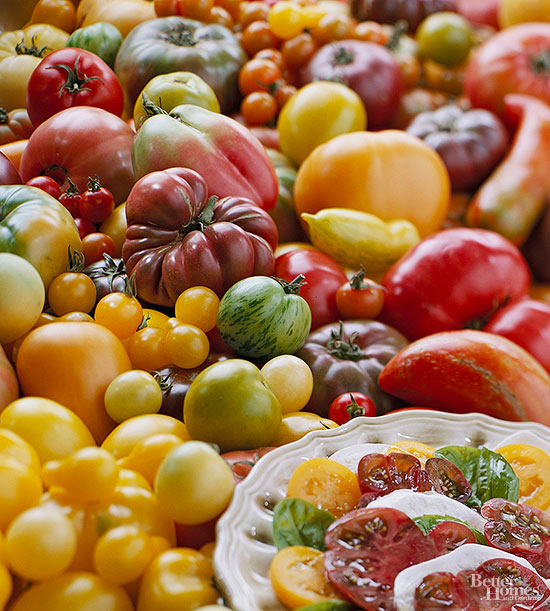
Tomato diseases strike from time to time but baskets of luscious fruit is the norm when growing your own tomatoes. Here are a few of our favorite tips and ideas for growing great tomatoes.
Get your tomatoes off to a perfect start.
15 fun ideas for growing tomatoes.
Tips for growing healthy tomatoes.
Copyright © www.100flowers.win Botanic Garden All Rights Reserved